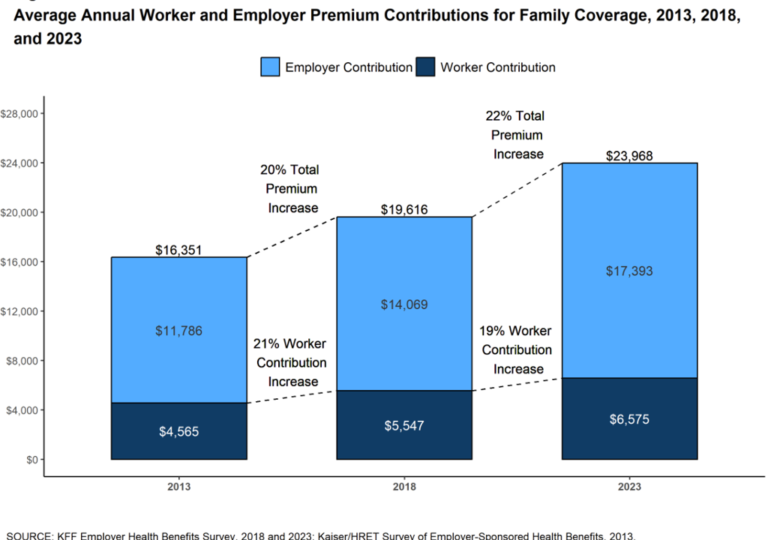The pandemic was a disaster for healthcare supply chains in the United States – and all over the world. Backorders on PPE items like gloves and masks increased risks for hospital workers and patients alike, and shortages on other items impacted hospitals’ ability to provide the care needed for patients. While hospitals seek to be better prepared for the next pandemic, in most ways, hospital routines have gone back to normal, and supply chain leaders have significant reason to fear the next pandemic.
However, there may be something else that concerns supply chain leaders even more: the need to leverage technology to rapidly bring routines for purchasing, inventory management, demand forecasting, warehousing, and other vital processes up to date. If they don’t, the likes of Amazon and Walmart could walk all over them. In fact, we have already witnessed the entry of these titans into the healthcare space. These companies have something that most hospitals don’t: advanced technologies for handling logistics, transactions, and inventories. In fact, hospitals are generally several generations behind other industries when it comes to these types of technology adoptions. (Can you think of another industry where you can still find a fax machine?)
Healthcare has more to gain from technology advances than most industries. But there’s also more holding it back, including the very culture of the industry. So, how do we break through to the other side?
The promise (and challenge) of new tech adoption in healthcare
Like in every other industry, artificial intelligence (AI) is knocking on the doors of healthcare with solutions that promise to revolutionize how healthcare is provided. Some of AI’s value in healthcare is directly tied to patient care quality and surgical outcomes:
- Remote monitoring solutions and AI-powered home care are getting dramatically better.
- Surgical techniques can be improved or made more effective through AI enabled treatment approaches and technologies.
- Patient safety can be aided by AI through solutions that partially avoid the consequences of human error (although much is still to be discovered about potential weaknesses of AI and the consequences these may have for patient safety).
For the supply chain leader, AI also carries a lot of promise: Advanced inventory management solutions have been around for a while, and AI has the potential to improve inventory management, warehouse management, purchasing workflows, contract management, demand forecasting, just-in-time (JIT) inventories, and much more. In U.S. healthcare, much of this is still done (semi-)manually, and the associated waste, errors, and delays are substantial.
U.S. healthcare needs technology such as AI to fix this and more, but let’s face it: For an industry that still relies on fax machines and manual practices, this is a giant leap, not just a matter of upgrading to the newest purchasing technology. In fact, in terms of some of the technologies currently presented to healthcare, there most certainly will be cases of “you can’t get there from here.” In other words, the technologies are so advanced that their adoption will be impossible due to the lack of workforce, workflow, and cultural preparedness of the healthcare institution.
We have already seen this with inventory management systems, video AI warehousing solutions, and more: The technology gets implemented, but the systems lack efficiency because staff doesn’t really know their functionalities and limitations. In the end, they end up causing more problems than they solve.
For example, inventory management systems are supposed to ensure a hospital always knows what it has, but hospitals with inventory management systems still have lots of recalled and expired devices on their shelves. There is nothing wrong with the inventory system; the problem is often that the workforce doesn’t understand its limitations and functions, that workflows haven’t been adjusted to fit the new technology, or simply that healthcare is extremely resistant to change and the new technology is not a cultural fit.
Another example is the introduction of digital approval and workflow processes. How can you adopt this and achieve efficiency in your purchasing process if staff doesn’t even know where the contracts are located?
Where tech providers are failing healthcare
In all fairness, difficulties in implementing new technologies in the healthcare supply chain are not solely caused by the hospital. They also come from the technology provider, whose technology may be proven solid in other industries but hasn’t been sufficiently adjusted to account for the unique nature of healthcare. In both cases, there is a cultural deficit that makes technology adoption difficult:
- Healthcare workflows, staff expectations, training, and mindsets are not aligned with the new technology, and its adoption becomes disruptive and suboptimal from a functionality perspective.
- Technology providers that have seen their technologies revolutionize other industries fail to recognize the unique nature of healthcare from a workflow, mindset, and culture perspective. As a result, implementations take too long and ultimately nobody likes the product because it doesn’t really “fit.”
For advanced technologies to solve problems in the healthcare supply chain, they must “meet hospital staff where they are.” Given that 83 percent of frontline clinicians and hospital leaders still rely on manual inventory management, AI-powered supply chain solutions are just a step too far. Digital leaps happen in consumer electronics because consumers, especially younger consumers, have significant capacity for change. Digital leaps do not happen in healthcare because healthcare inherently has a pen-and-paper mindset and is resistant to change.
The need for bridge technologies in healthcare
Obviously, staying with the status quo is not a good solution. The healthcare supply chain is enormously wasteful, inefficient, and outdated. So, how does the healthcare supply chain “get there” before Amazon takes over?
Supply chain leaders will be well advised to look at technologies and technology partners that are serious about the “cultural deficit” of technologies born outside of healthcare – and to approach digitization of the supply chain as a step-by-step process. Specifically, they should be looking at bridge technologies that allow hospitals to gradually digitize workflows and decision making without requiring massive culture and mindset shifts. Mindsets change slowly.
Bridge technologies in the healthcare supply chain include:
- Technologies that solve part of a problem (rather than the entire universe) with simple, isolated solutions that can be “owned” and operated by staff
- Technologies that are designed to fit in with the existing workflow of the hospital.
- Technologies that can be adopted in a step-by-step approach, with each step representing improvement compared with the last step – but with each step requiring only limited change
- Technologies that leverage existing data infrastructure to create efficiencies rather than requiring new data infrastructure
- Low-tech solutions that represent incremental improvement without alienating staff
One example of a bridge technology in the healthcare supply chain is scanning barcodes using cell phones to build and analyze inventory lists. It represents a leap forward in digitization because a nurse doesn’t have to spend two days a month taking notes on a notepad. But this level of digitization neither disrupts workflow nor demands extensive training. Another example is digital workflow solutions for the central sterile department – solutions that truly make things easier while also offering the increase in safety and efficiency we expect from digital solutions.
Very advanced technology solutions in healthcare presume that a digital culture is ready for their utilization, while healthcare inventory management is actually decades behind other industries (e.g., retail, manufacturing) digitally. More appropriate and impactful digital solutions should meet the staff where the staff is with low-tech, narrow, undisruptive solutions that solve operational and safety issues.
Photo: sorbetto, Getty Images

Ashlea Souffrou, is a 17-year veteran of the medical device industry with a passion and dedication to uncovering sustainable and cost-saving solutions within healthcare. She founded SxanPro in 2019, building a technology company that digitizes inventory processes throughout the hospital supply chain. As CEO of SxanPro, Ashlea continues to drive the advancements of the company’s product line while fostering strategic partnerships with companies and healthcare systems across the industry.
This post appears through the MedCity Influencers program. Anyone can publish their perspective on business and innovation in healthcare on MedCity News through MedCity Influencers. Click here to find out how.






